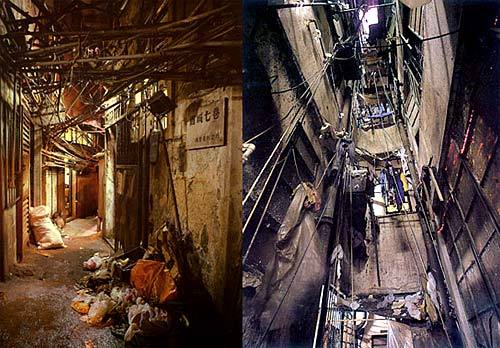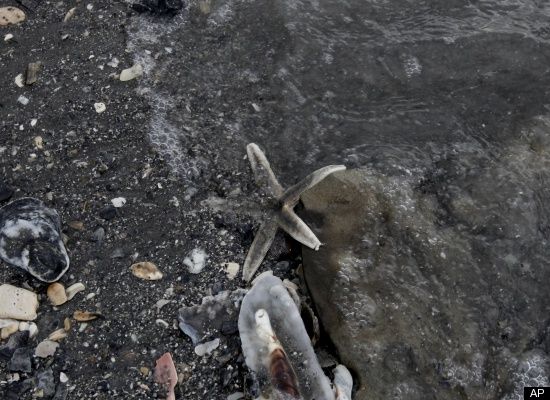 |
| Image by: Evan Leeson/ecstaticist |
Small communities in Chile, Peru and South Africa are harvesting fog for their water needs. Fog harvesting is an ancient technique of collecting water -- dates as far back as 2,000 years ago when people collected fog water dripping from trees. Serious harvesting started only a hundred years ago. The idea for a mesh fog collector probably came from observing dew on a spider web. Apparently, humidity changes the structure of the protein fibers of a spider web creating knots in them. The water droplets slide down the smooth part of the fiber in-between the knots and collect at the knots.
 Robert Schemenaeur, Emeritus research scientist in the Department of the Environment in Canada developed the first fog catching project in Chungungo, Chile at the edge of the Atacama desert. A fog collector consists of ultraviolet-resistant polypropylene mesh, stretched horizontally between two upright poles. The net is positioned at right angles to the prevailing winds. As fog passes through the net, it forms larger water droplets. The droplets run down the mesh and drip into gutters. The water then flows into pipes, which feed into a reservoir.
Robert Schemenaeur, Emeritus research scientist in the Department of the Environment in Canada developed the first fog catching project in Chungungo, Chile at the edge of the Atacama desert. A fog collector consists of ultraviolet-resistant polypropylene mesh, stretched horizontally between two upright poles. The net is positioned at right angles to the prevailing winds. As fog passes through the net, it forms larger water droplets. The droplets run down the mesh and drip into gutters. The water then flows into pipes, which feed into a reservoir. The project provides 40 liters of water per person per day.
Encouraged by the success of this project,
Bellavista, Peru a settlement close to its capital city Lima. Lima gets only a few drops of rain a year but a thick fog covers the city eight months in a year. The Germans who run an NGO called the Alimón enlisted the help of the members of the community in building these meshes, planting the trees, laying the gutters and creating a reservoir/tanks for the water. Alimón is a Spanish term for 'working together'. This project would not be possible without the participation of the entire community. For more on the work of this NGO click here.
The 200 people that live on the steep slopes of Bellavista had no running water and are considerably poorer than the residents that live downhill and enjoy municipal water. They spent one-fourth of their incomes on water which was delivered to them in trucks. Fog harvested water has very little impurities and is much cheaper. A single net alone catches about 560 liters of water. “At the beginning,” Lummerich said, “the people from the village thought Kai carried the water uphill during the night to fill the tanks, because they couldn’t believe there was so much water.”
Funnel shaped contraptions tied to Tara/casuarina trees also collect fog water; they drip down into gutters or tiled channels and transported storage tanks. What is wonderful about fog harvesting is that people actually plant trees and there is no threat to the environment.
It is also heartening to know that communities bond when there is a common cause.
The fog harvesting pictures on the blog are from this National Geographic website
Update 4/7/2013: Thanks to Permies.com for featuring my post on their forum!!
The 200 people that live on the steep slopes of Bellavista had no running water and are considerably poorer than the residents that live downhill and enjoy municipal water. They spent one-fourth of their incomes on water which was delivered to them in trucks. Fog harvested water has very little impurities and is much cheaper. A single net alone catches about 560 liters of water. “At the beginning,” Lummerich said, “the people from the village thought Kai carried the water uphill during the night to fill the tanks, because they couldn’t believe there was so much water.”
Funnel shaped contraptions tied to Tara/casuarina trees also collect fog water; they drip down into gutters or tiled channels and transported storage tanks. What is wonderful about fog harvesting is that people actually plant trees and there is no threat to the environment.
It is also heartening to know that communities bond when there is a common cause.
The fog harvesting pictures on the blog are from this National Geographic website
Update 4/7/2013: Thanks to Permies.com for featuring my post on their forum!!
































